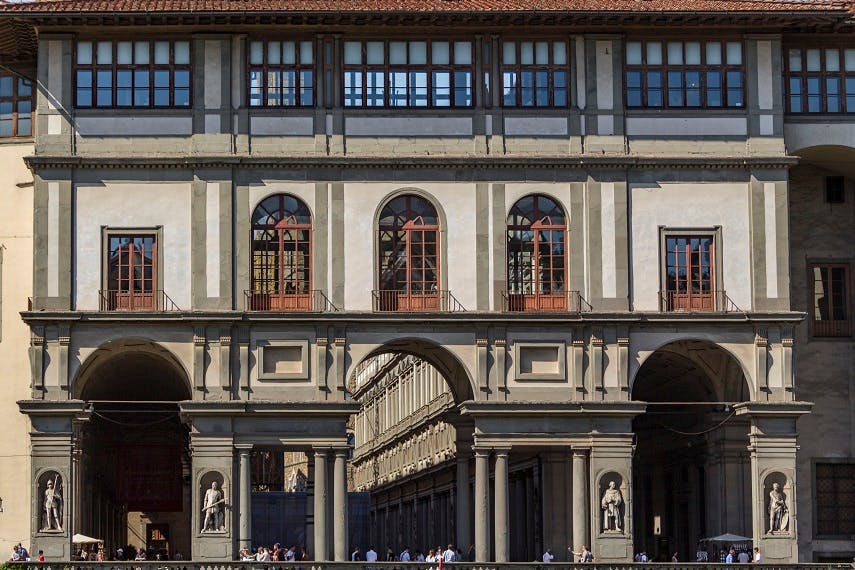The Uffizi Palace
The great building of the Uffizi Galleries is one of the most significant examples of sixteenth century Italian architecture. Shortly after 1550, Cosimo I de’ Medici, Duke of Florence commissioned Giorgio Vasari to build the palace, intending to unite the city magistrates, or rather the “uffici” (offices), or “uffizi”, as they were called then, of the administrative departments under one roof. Its addition to the urban landscape on the banks of the River Arno and alongside the Palazzo della Signoria replaced part of the old medieval town of towers and small houses with an imposing construction unlike anything else in the area, characterized by modern lines and superimposing the precise stereometry of monolithic blocks with the two parallel “prongs” of the eastern and western wings onto the original fragmented and discontinuous architecture. Instead of dark, narrow and unhealthy spaces, Vasari had created a wide and bright space. The architect adopted a classical style, Doric, which alludes to the justness of the Prince's rule, and including many innovative features throughout the architecture: the structure is constructed from a series of modules, each with three stories visible on the facade: the portico (arched colonnade), the piano nobile (main floor) and the loggia (covered gallery), and is divided vertically into three parts corresponding to the three bays between the columns of the portico and loggia. The architect's innovation and modern design can be seen in the complete freedom employed for the rooms of the piano nobile, where there is no relation between the interiors and the outer facade: the interior rooms are different sizes, disregarding the regularity of the windows which are instead arranged according to the facades. This is made possible by the presence of continuous barrel vaults which enabled the rooms to be positioned above the dividing walls as and where required. Another detail of a structural, and therefore not visible, nature, are iron bar supports which Vasari used within the walls themselves. After the deaths of Cosimo I and Vasari in 1574, works were well underway and were completed shortly afterwards by Francesco I and his architect Bernardo Buontalenti only twenty years after construction had begun.
